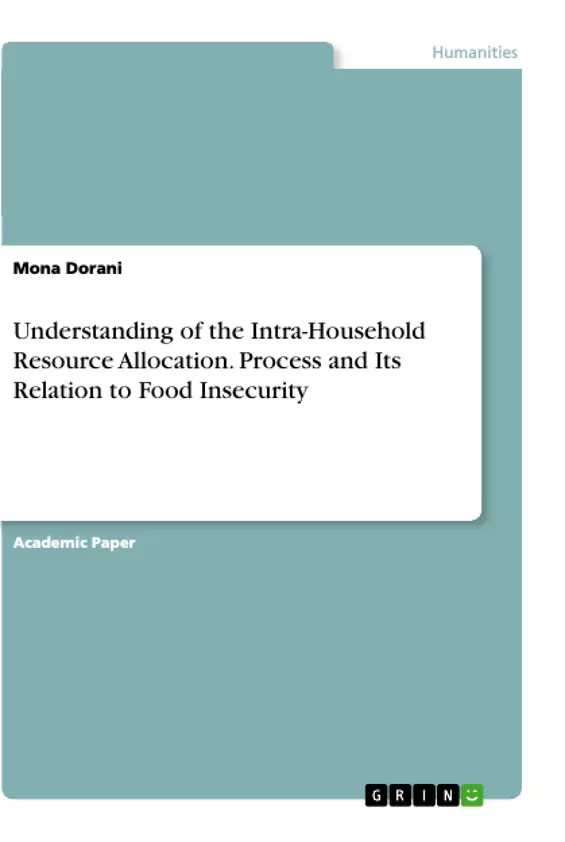This qualitative study examined the relationship between intra-household food allocation with food-security in disadvantaged households supported by Imam Khomeini Relief Committee. Participants are recruited from 30 women by purposeful sampling who are the head of their household. The data has been collected by semi-structured and unstructured interviews. This study used a phenomenological approach and is grounded in the analysis of everyday lived experiences. The data was analyzed by using conventional content analysis. Data analysis results demonstrate that mothers' personal, social and cultural characteristics, her authority, her educational and occupational status in the low-income female-headed household, plays a crucial role in the quality of nutriment of the family. In addition, the income or financial wealth of each member of the family changes the level of food security of the household.
The food that a person consumes not only satisfies hunger but also has an impact on health, work, life, and success. Sometimes people are not well supplied with nutriment, because of various reasons such as economic problems. The nutritional status of an individual is influenced by a set of reasons from the most superficial to the profoundest, like culture and beliefs, social capital, social norms, gender and etc., that determine the quality and quantity of food.
Inhaltsverzeichnis (Table of Contents)
- Introduction
- Review of Body of Knowledge and Background of Intra-household Resource Allocation and Food Insecurity in Iran
- Methodology
- Data Analysis
- Discussion
- Conclusion
Zielsetzung und Themenschwerpunkte (Objectives and Key Themes)
This research explores the patterns of intra-household resource allocation within families supported by the Imam Khomeini Relief Committee in Tehran, aiming to understand the formation of this process and its potential inequality. It seeks to answer the question of how this allocation process is shaped and whether it is characterized by inequity.
- Intra-household resource allocation in relation to food insecurity
- Influence of cultural factors on resource allocation
- Gender roles and their impact on intra-household resource allocation
- Food security and its relationship to health and well-being
- The impact of family structure on resource allocation
Zusammenfassung der Kapitel (Chapter Summaries)
- Introduction: This chapter defines and discusses the concept of food insecurity, exploring its historical development and various definitions. It also examines the factors that contribute to food insecurity, particularly focusing on the intra-household resource allocation process.
- Review of Body of Knowledge and Background of Intra-household Resource Allocation and Food Insecurity in Iran: This chapter reviews the existing body of knowledge regarding food insecurity in Iran, citing research conducted in various fields such as nutrition, health, agriculture, economics, and demographics. It highlights the prevalence of nutritional deficiencies and their socioeconomic and health consequences.
Schlüsselwörter (Keywords)
The study focuses on key terms and concepts including food insecurity, intra-household resource allocation, cultural factors, gender roles, food security, family structure, and the anthropological perspective on food.
- Citar trabajo
- Mona Dorani (Autor), 2014, Understanding of the Intra-Household Resource Allocation. Process and Its Relation to Food Insecurity, Múnich, GRIN Verlag, https://www.grin.com/document/1003302



